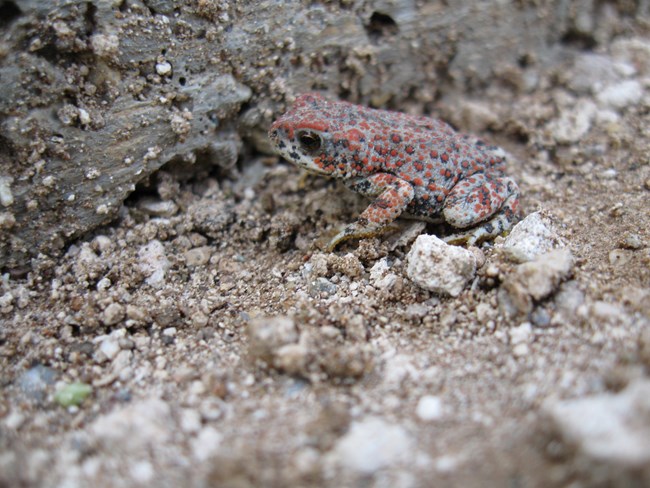
NPS/ K. Gonzales These animals are seldom seen during the heat of the day, but are active during the cooler nights, especially after a summer rainstorm. The most common amphibians at Chiricahua are the tiger salamander, southern spadefoot toad, great plains toad, and the canyon treefrog. Remember, all animals, plants, rocks, and artifacts are protected, and collecting anything is illegal. Listen for the explosive, whirring voice of the canyon treefrog near rocky pools along Rhyolite Creek. This tiny frog – usually less that 2 inches long – has a big voice, and is more often heard than seen. Toads and salamanders can frequently be found on or near the roads, or near buildings where nighttime lights may attract their insect prey. 
NPS/A. Huston Check out our species list, and discover ways that Chiricahua National Monument monitors our resources. |
Last updated: December 19, 2018
